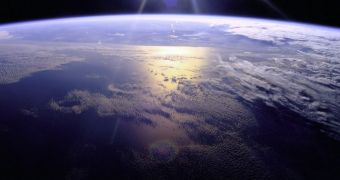For a great many years, scientists have believed that the oceans on our planet were formed from water vapors emitted during volcanic eruptions that condensed and fell to the ground over millions of years. But a scientist now proposes that this might not have been the case. He argues that water is not something that our planet had when it was formed, and believes that the life chemical was brought here on comets coming in from the outer solar system. The expert adds that the region was filled with turbulences, caused by large planets launching meteorites and comets towards the Sun.
French researcher Francis Albarede, the proponent of the new idea, works at the Laboratoire des Sciences de la Terre (Laboratory of Earth Sciences), in the CNRS / ENS Lyon / Universite Claude Bernard. He argues that ice-laden meteorites, asteroids and comets started reaching the planet some 100 million years after the Earth was formed, roughly 4.5 billion years ago. Albarede also believes that the impacts that brought water here might have inadvertently helped the planet's seismic activity, easing the movements of our tectonic plates.
In essence, what the French researcher is proposing is that the water we drink everyday, and that covers most of our planet, is, in fact, extraterrestrial in origin. Details of this idea, which is bound to spawn numerous heated controversies, were published in the October 29 issue of the respected scientific journal Nature. In other words, space agencies in charge of space exploration today have gotten the essence of the problem figured out – in order for life to exist, there must be water, AlphaGalileo reports. Mars received waters as well, but lost them very quickly.
The Moon and Venus are extremely cold, and, even if they have water-ice, it's extremely difficult to imagine that they would support life, in any form. The surface of Mercury is a burning inferno, where temperatures reach scorching heats even during the night. The outer planets are all either too far from the Sun, or are made mostly of gas. Some of Jupiter and Saturn's moons may still have liquid waters under their surfaces, but their surface temperatures are well below minus 100 – minus 150 degrees Celsius. Expeditions are currently in the works to determine what lies beneath the surface crusts.

 14 DAY TRIAL //
14 DAY TRIAL //